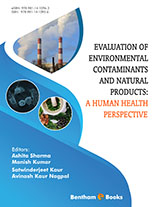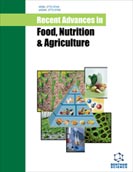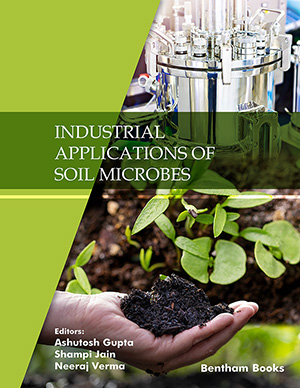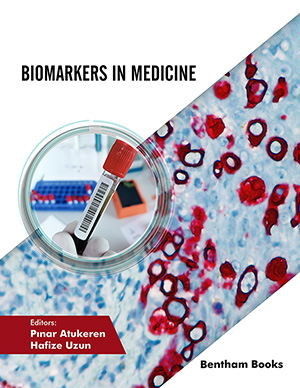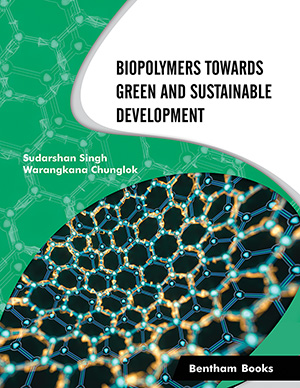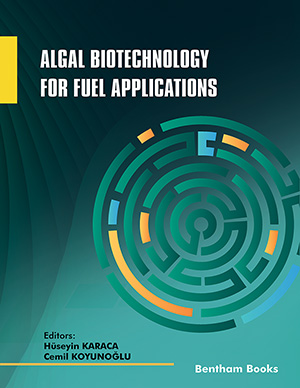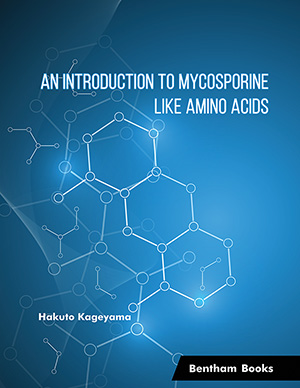List of Contributors
Page: vi-v (2)
Author: Ashita Sharma and Manish Kumar
DOI: 10.2174/9789811410963119010003
Environmental Contaminants: Sources and Effects
Page: 1-23 (23)
Author: Savita, Vivek Chopra and Anuradha Sharma
DOI: 10.2174/9789811410963119010004
PDF Price: $15
Abstract
Environmental contaminants are those substances which are present in the environment above the permissible limits of concentration, which adversely alters the environment and is toxic to the human, animal and plant health. Due to industrialization and overuse of chemical fertilizers, our environment has become contaminated with various types of contaminants. The contaminants include solid, liquid and gaseous substances which are produced by human activity for short-term economic benefits at the cost of long-term ecological benefits for humanity. The sources of contaminants may be point source or non-point source. The common sources of contaminants are fossil fuels, industries and industrial accidents, oil spills, mining, ammunitions and agents of war etc. The contaminants may be natural or xenobiotic (man-made) in nature. The common environmental contaminants are polyaromatic hydrocarbons, heavy metals, pesticides organic solvents and inorganic solvents etc. Accidental release of these contaminants in the environment leads to evolution of new diseases to human health and as well as mass death of population. The present chapter deals with the various types of contaminants, sources and effects of environmental contaminants.
Environmental Pollutants and Risk of Cancer
Page: 24-46 (23)
Author: Indranil Chattopadhyay
DOI: 10.2174/9789811410963119010005
PDF Price: $15
Abstract
Cancer is characterized by cell proliferation, prevention or bypass of programmed cell death, genomic instability, angiogenesis, invasion and metastasis which are influenced by environmental pollutants. It is the major cause of death in world wide. Lifestyle factors such as diet, smoking and use of alcohol are responsible for the development of cancer in a large part of the population of developed countries. Existence of carcinogens or co-carcinogens in polluted air and drinking water, as well as in food, played a significant contribution in our country. Endocrine disrupters modify the risk of breast, endometrial and prostate cancer. Laryngeal, oropharyngeal, hypopharyngeal, sinonasal, nasopharyngeal, oral and lung cancer are positively associated with smoking and air pollutants. Tobacco smoking induces DNA adducts formation which is responsible for mutations at K-RAS and TP53 gene in the lung and pancreatic adenocarcinomas. Tobacco smoking induces promoter hypermethylation of p16 and DAPK genes in Non-Small Cell Lung Cancer (NSCLCs). Aflatoxin B1 (AFB1) causes promoter hypermethylation of tumour-suppressor genes RASSF1, MGMT, and p16 in human hepatocellular carcinoma (HCC) patients. Down-regulation of p15, p16, PRKG1, PARD3, and EPHA8 genes at mRNA level due to hypermethylation and increased expression of STAT3, IFNGR1 at mRNA level due to hypomethylation were reported in patients having benzene exposure. Methylationinduced transcriptional inactivation of tumor suppressor genes, including p53, CDKN2A (p16INK4A), Ras association domain family member 1 (RASSF1A), and death-associated protein kinase (DAPK) were reported in arsenic exposed individuals. The genetic and epigenetic alterations respond to environmental carcinogens have significant contribution for biomarker development in assessment of health risk.
Toxicity of Environmental Contaminants: Use of Battery of Standard Biological Assays
Page: 47-64 (18)
Author: Tajinder Kaur, Sneh Rajput, Gurpreet Kaur, Renu Bhardwaj and Saroj Arora
DOI: 10.2174/9789811410963119010006
PDF Price: $15
Abstract
Environmental pollution had increased greatly due to fast urbanization and industrialization resulting in release of toxic compounds into the surrounding. Traditionally, physical and chemical parameters were used to detect these toxic compounds in the environment. Besides these it is also essential to study new assays to understand biological responses of undesirable compounds on living systems. Combination of all the methods will provide new prospects for integrated strategies for environmental and risk assessment. Bioanalytical techniques have become a rapidly emerging branch of environmental sciences. Therefore, the present communication deals with emerging environmental pollutants and bioanalytical tools for in situ environmental monitoring.
Allium cepa Root Chromosomal Aberration Assay: A Tool to Assess Genotoxicity of Environmental Contaminants
Page: 65-93 (29)
Author: Mandeep Kaur, Ashita Sharma, Rajneet Kour Soodan, Vanita Chahal, Vaneet Kumar, Jatinder Kaur Katnoria and Avinash Kaur Nagpal
DOI: 10.2174/9789811410963119010007
PDF Price: $15
Abstract
Various anthropogenic activities have resulted in constant increase in contamination of ecosystem and degradation of human health due to bio-accumulation of different types of chemical pollutants. Higher plants being sensitive can be used as one of the rapid biotools for assessment and screening of chemical contaminants present in air, water and soil ecosystems. Different toxicity assessment assays employing a range of living organisms such as microbes, plants, animals and even human cell cultures have been widely used for environmental monitoring. Among all, Allium cepa root chromosomal aberration assay is recognised as one of the important biological test systems being used as a better bio-indicator for different types of pollutants (heavy metals, polycyclic aromatic hydrocarbons, and pesticides). Literature survey has revealed the assessment of genotoxic effects by induction of different types of mitotic abnormalities in Allium cepa root tips. From the literature surveying, it was clear that before exploration of any chemical compound/pesticide/heavy metal for its medicinal or other commercial use, genotoxic study is the first and mandatory step to be carried out. Present chapter is an attempt to compile studies on genotoxic effects of chemical compounds, pesticides, heavy metals, soil samples and wastewater effluents using Allium cepa root chromosomal aberration assay.
Pesticides: Problems and Remedial Measures
Page: 94-115 (22)
Author: Sonal Yadav and Satyawati Sharma
DOI: 10.2174/9789811410963119010008
PDF Price: $15
Abstract
The population is increasing at a tremendous rate and to feed them from the exploited land would be of great concern. Presently, the major concern is the use of hybrid seed, genetically modified crops, chemical pesticides, and fertilizer. The purpose of this chapter is mainly to focus on the soil contamination problem caused by pesticides and present a review of the existing methods for remediation of contaminated soils. First, a brief discussion of the pesticides along with its classification, and the impact caused by the pesticides on the environment and human health are examined. Then, the current practices and evolving techniques for soil remediation, which are mainly used for the eradication of pesticides are discussed, along with their advantages and disadvantages. Among the different existing methods, bioremediation is the most promising technique. Bioremediation of contaminated soil using pesticides by the use of microorganisms is eco-friendly, most effective and economical method of detoxification.
Biphenyls: Health Impacts and Toxicity Evaluation
Page: 116-137 (22)
Author: Sakshi Sharma, Avinash Kaur Nagpal and Inderpreet Kaur
DOI: 10.2174/9789811410963119010009
PDF Price: $15
Abstract
Biphenyl is an aromatic hydrocarbon, occuring naturally in crude oil, coal tar and natural gas or produced synthetically as a by-product during benzene production. Synthetically manufactured polychlorinated (PCBs) and polybrominated (PBBs) biphenyls have serious health impacts on human beings. Therefore, biphenyls are banned in many countries including US, UK, India, Japan, etc., but are still present in the environment. This chapter is a comprehensive discussion on biphenyls based on available literature. It includes a brief introduction about physical and chemical nature of biphenyls, their applications, health impacts and toxicity evaluation. Various entry routes of these chemicals in the environment e.g., improper disposal/ incineration of industrial wastes containing PCBs and PBBs, leakage from old electronic instruments, accidental spillage of these chemicals during transportation/ handling, etc, have also been discussed. PCBs and PBBs do not degrade readily and stay in different environmental media for longer durations and enter food chain and bioaccumulate in human bodies via dermal, inhalation and oral exposure routes. High exposure to biphenyls leads to various health problems such as neurological, reproductive, hepatic, gastrointestinal and renal disorders, endocrine disruption, cancer, etc. Various techniques used for the identification or estimation of PCBs in the environment and biological samples such as gas chromatography coupled with electron capture detection (GC-ECD) or mass spectrometry (GC-MS), high resolution gas chromatography (HRGC), etc. have been discussed briefly. Moreover, various assays employed for the assessment of toxic effects of PCBs and PBBs, using prokaryotic/ eukaryotic models and different remediation techniques for these chemicals have been discussed.
Actinomycete Enabled Remediation Strategies: Potential Tool for Pollutant Removal from Diverse Niches
Page: 138-159 (22)
Author: Anu Kalia, Sukhjinder Kaur and Madhurama Gangwar
DOI: 10.2174/9789811410963119010010
PDF Price: $15
Abstract
Industrialization, urbanization and misuse of various natural processes have led to the generation of many pollutants in the environment. These include halogenated nitroaromatic compounds, petroleum hydrocarbons, pesticides, phthalate esters and solvents. Remediation of contaminated sites through conventional methods relies on physicochemical treatments thereby posing considerable technical and economic issues or challenges. A promising technology for the efficient removal of pollutants, bioremediation, involves utilization of capabilities of microorganisms in a costeffective manner. Among microorganisms, actinomycetes have omni-presence in diverse ecological niches and they play a major role as a decomposer community involved in reutilization of substances and degradation of complex polymers as well as in the synthesis of useful bioactive compounds. Therefore, actinomycetes have gained unusual attention as potential candidates for bioremediation. Moreover, prominence of omic studies and nanotechnology has revealed the metabolic regulations and processes that actinomycete utilize to manage the toxicity of pollutants. This manuscript will discuss the research interventions on bioremediation of various pollutants through actinomycetes as remediation agents and their contribution towards environment cleanup.
Role of Phytoconstituents in Modulating Xenobiotic Metabolism
Page: 160-192 (33)
Author: Harsimran Kaur, Sandeep Kaur, Satwinderjeet Kaur and Paramjeet Kaur
DOI: 10.2174/9789811410963119010011
PDF Price: $15
Abstract
Contaminant-induced harmful effects are a global concern. Liver is the main site of xenobiotic metabolism and plays a vital role in averting accumulation of a wide range of compounds by converting them into a form suitable for elimination. Phase I drug metabolizing enzymes, primarily cytochrome P450s carry out bioactivation of carcinogens, thus converting them into electrophilic species which are genotoxic and cytotoxic. These reactive intermediates form protein adducts and induce DNA and RNA damage. Phase II drug metabolizing enzymes, such as glutathione-S-transferases, UDP-glucuronosyl transferases, sulfotransferases and N-acetyltransferases detoxify the reactive electrophilic species by conjugating these hydrophobic intermediates to a water-soluble group, thus masking their reactive nature and allowing subsequent excretion. Beneficial effects of natural dietary compounds in detoxification and elimination have been demonstrated in various studies. They have been reported to be effective in inhibiting chemically-induced carcinogenesis. Phytochemicals are known to influence the biotransformation of xenobiotics and may play an important role in reducing their toxicity and carcinogenicity. Indoles, isothiocyanates, allium organosulfur compounds, flavonoids, phenolic acids, terpenoids and psoralens may alter the levels of Phase I and Phase II drug metabolizing enzymes by affecting the transcriptional rates of their genes, the turnover rates of specific mRNAs or enzymes or the enzyme activity by inhibitory or stimulatory actions. Agents that preferentially activate Phase II over Phase I enzymes are considered as promising chemopreventives. Phase I metabolism involves oxidation, reduction or hydrolysis reactions via cytochrome P450 enzymes and lead to the conversion of drugs to more polar (water soluble) active metabolites by unmasking or inserting a polar functional group such as -OH, -SH and –NH2. Xenobiotics metabolized via Phase I reactions have longer halflives. Phase II metabolism involves conjugation reactions such as glucuronidation, acetylation and sulfation. Conjugation reactions increase water solubility of drug by adding a polar moiety thus converting them into water soluble inactive metabolites. The present book chapter discusses the interaction between phytochemicals and xenobiotic metabolizing enzymes in detoxification of harmful exogenous compounds which have been implicated in carcinogenesis.
Potential Health Benefits of Nutraceuticals for Human Health
Page: 193-209 (17)
Author: Sandeep Kaur, Manish Kumar, Kritika Pandit, Ajay Kumar and Satwinderjeet Kaur
DOI: 10.2174/9789811410963119010012
PDF Price: $15
Abstract
Nutraceuticals or functional food plays a key role in curbing the inception and etiology of several degenerative diseases and acts as a medicinal food with least side effects in comparison to other therapeutic agents and thereby successfully implemented in modern drug discovery. Global nutraceutical market was expected to rise by 67 billion US dollars approximately in 2016 which indicated surging demand for functional foods worldwide. The major nutraceuticals market includes supplements/medications, foods and functional beverages that provide mental acuity, energy and immunity of the individuals. This review focuses on the novel strategies that implemented the use of nutraceuticals for preventing and treating the diseases/disorders by avoiding unhealthy food and promoting the consumption of foods that go beyond basic nutrition. In the present review, we demonstrate the role of nutraceuticals in modulating certain physiological and pathophysiological processes which are involved in the development of human acute and chronic diseases.
Caspases and Phytochemicals: An Important Link in Cancer Chemoprevention
Page: 210-243 (34)
Author: Manish Kumar, Sandeep Kaur, Varinder Kaur and Satwinderjeet Kaur
DOI: 10.2174/9789811410963119010013
PDF Price: $15
Abstract
The use of natural phytochemicals over other treatment regimens offers a safe and broad-spectrum strategy to overcome the incidence of cancer. Phytochemicals play a pivotal role for the induction of apoptosis in cancerous cells by activation of pro-apoptotic proteins and initiator caspases that in turn cleave and execute the activation of down-stream effector caspases. The caspases belong to the family of proteases that exist as inactive pro-forms or zymogens that on cleavage forms an active enzyme mediating apoptosis. Since cancer cells become insensitive to anti-growth and apoptotic signals, thus these caspases remain inactive in them. Array of phytochemicals belonging to different categories viz. phenols, flavonoids, terpenoids, alkaloids, stilbenes etc. are reported to trigger the activation of caspases in cancer cells by modulating various cell-death stimulating pathways. In the present review, we highlighted the role of different phytochemicals that execute the cleavage of caspases in cancerous cells by activating pro-apoptotic enzymes and proteins involved in the induction of apoptosis. This will assist to select and identify the molecular mechanisms of some effective phytochemicals targeting caspases in their chemopreventive ability.
Understanding Molecular Diagnosis in Cancer
Page: 244-264 (21)
Author: Trupti N. Patel and Priyanjali Bhattacharya
DOI: 10.2174/9789811410963119010014
PDF Price: $15
Abstract
The term diagnosis refers to a set of tests or investigations involving various biological samples such as tissue, body fluids and/or other irregularities in the body. While diagnosis is a broad term, examining the abnormalities in macromolecules - DNA, RNA or proteins at the level of nucleic acids and amino acids makes it a molecular diagnosis. As the world of diagnosis is rapidly expanding and advancing, newer minimal invasive techniques are being researched to spare the patients from various discomforts. Healthcare professionals are also aiming towards personalized medicine, making the treatment more selective and accurate, at the same time ensuring patients’ safety. This is being achieved by high throughput analysis, though currently still economically very challenging. Technologies such as Histopathology, Polymerase Chain Reaction (PCR), Flow Cytometry (FC), Immunohistochemistry (IHC), Capillary Electrophoresis (CE) and Fluorescent In Situ Hybridization (FISH) are already in use for routine diagnosis in cancer. Though, high throughput technologies like, Next Generation Sequencing (NGS), Microarray studies, miRNA detection, ChIP (Chromatin Immune-Precipitation) and MeDIP-seq (Methyl-DNA Immunoprecipitation), SELDI-TOF MS (Surface-Enhanced Laser Desorption/Ionization Timeof Flight Mass Spectrometry), quantitative proteomic analysis and many more are triumphing into the diagnostic avenue, they are restrictively catering to high socioeconomic groups in developing countries. An average citizen is still missing out on these forms of diagnosis and personalized treatments, thus devaluing the very aim of diagnosis and treatment in cancer. It becomes the pursuit of diagnostic community to come up with cost effective investigations and affordable treatments that could be efficiently validated. In this chapter, we briefly discuss the differences between diagnostic, prognostic and predictive tests along with a detailed understanding of genes and gene products that form the basis of molecular diagnosis in cancer. We also focus on currently available high-throughput methods and the challenges associated with them.
Subject Index
Page: 265-276 (12)
Author: Ashita Sharma and Manish Kumar
DOI: 10.2174/9789811410963119010015
Introduction
Unbridled urbanization and development of natural land resources has led to the degradation of our surrounding environment. The air that we breathe, the water we drink and the food we eat is at risk of being contaminated with a plethora of chemical pollutants, some of them being potentially carcinogenic. This presents a challenge to human health. This book attempts to address this challenge in two parts which represent two different approaches. The first part of the book summarizes the alarming effects of environmental contaminants. Various studies depicting the direct relationship of environmental contaminants with cancer incidence have been referenced. Scientific studies have established an inverse relation between cancer and ingestion of dietary phytoconstituents (phytochemicals) in the form of fruits, vegetables and botanical herbs. Plant products as dietary supplements can suppress contaminant toxicity by regulating the resulting reactive species and also by assisting their bodily excretion through Phase 1 and Phase 2 enzyme metabolism. The second part of the book, shifts focus to phytoconstituents which, if included in diet, can prevent the harmful effects of pollutants. The text references numerous studies showing the anti-mutagenic, anti-genotoxic and anti-carcinogenic potential of many plant products. The combination of information about contemporary issues of carcinogenic contaminants in the environment coupled with the references to relevant studies in this handbook will enlighten readers studying courses in environmental chemistry, toxicology, botany, and ecology about environmental toxins and help them understand specific dietary measures known to reduce the toxic impact. Researchers in the field of nutrition can also benefit from the information provided.

